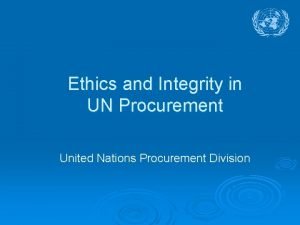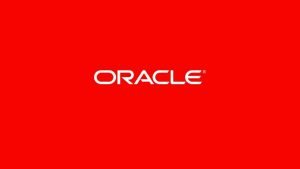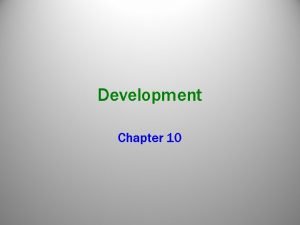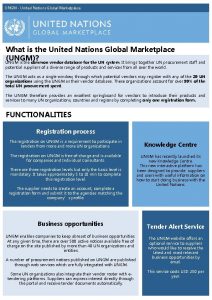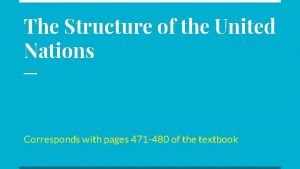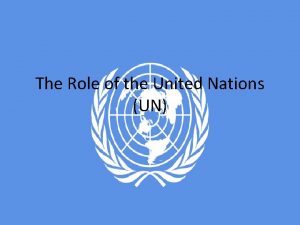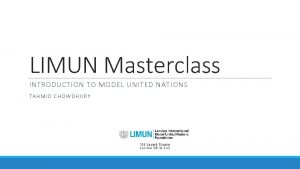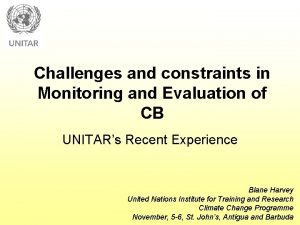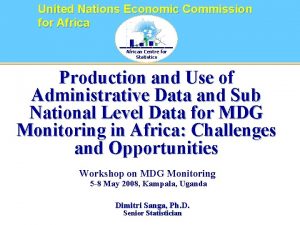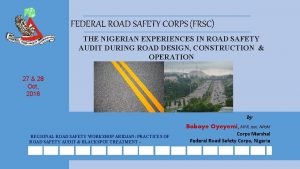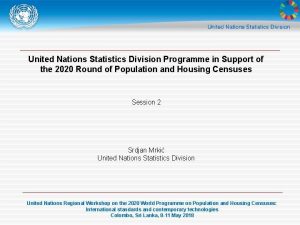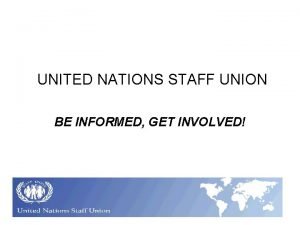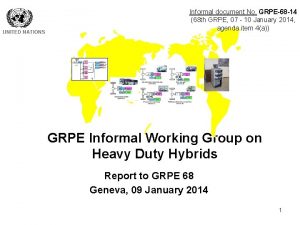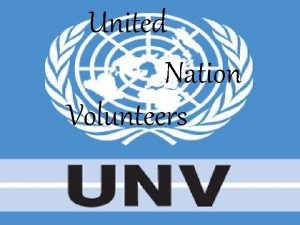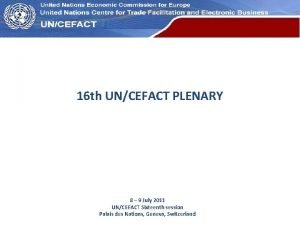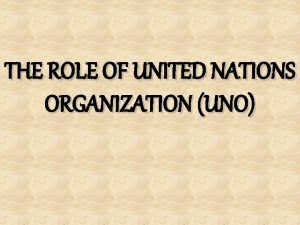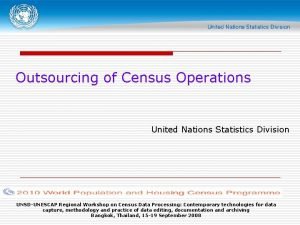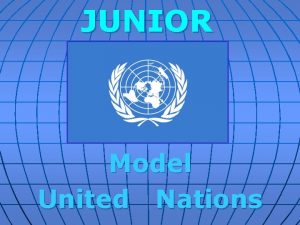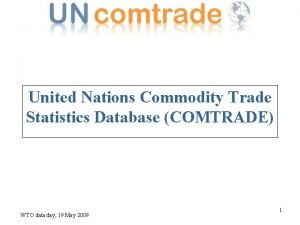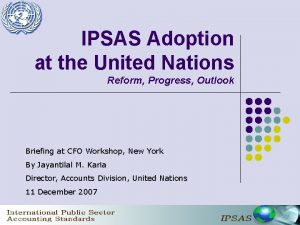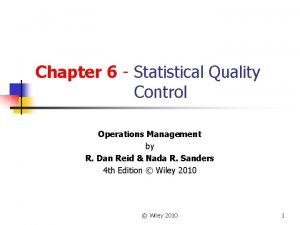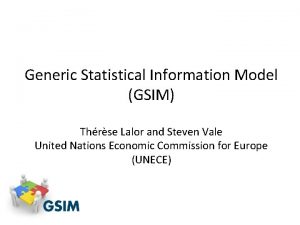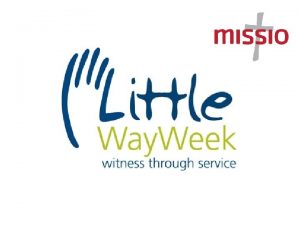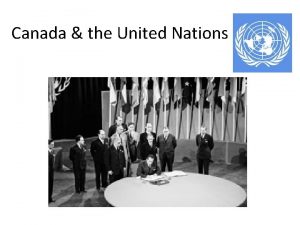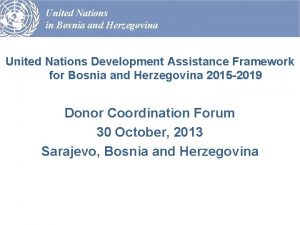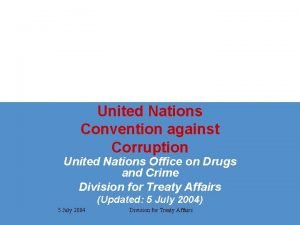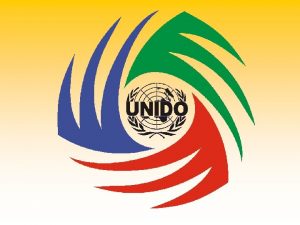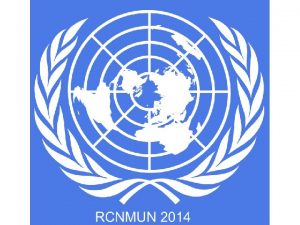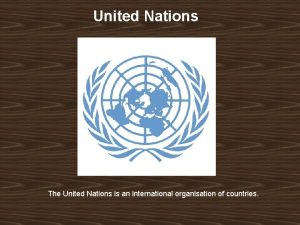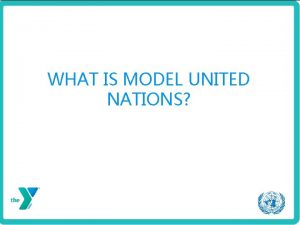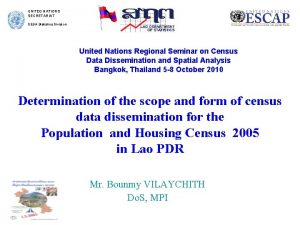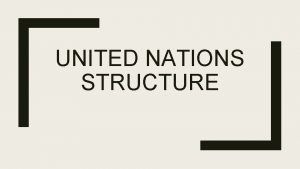Thrse Lalor Statistical Management and Modernisation United Nations




































- Slides: 36

Thérèse Lalor Statistical Management and Modernisation United Nations Economic Commission for Europe

Introducing • An initiative of the High-level Group for the Modernisation of Official Statistics • Heads of 13 statistical organisations • Annual projects in priority areas • Expert groups and task teams • Activities are voluntary and demand driven

Who are the HLG-MOS members? • Ireland - Chair • Australia • Canada • Italy • Mexico • Netherlands • New Zealand • Republic of Korea • Slovenia • United Kingdom • Eurostat • OECD • UNECE

Statistical Modernization Community • Launched in 2016 • Open to all statistical organisations who endorse “Statement of Intent” • No fee, but expectation to contribute • Partners benefit from collaboration and sharing • Four main principles: − Openness − Flexibility − Participation − Pragmatism

Governance Structure Since 2017

Modernstats Models and Frameworks • The mission of HLG-MOS is to oversee development of frameworks, and sharing of information, tools and methods, which support the modernization of statistical organizations. • These models and frameworks are cross-cutting, supporting the modernisation of all types of statistical production.

Generic Statistical Business Process Model (GSBPM) • It defines and describes the processes needed to produce official statistics. • The GSBPM is used by more than 50 statistical organisations worldwide.

Generic Activity Model for Statistical Organisations (GAMSO) GAMSO extends and complements the GSBPM by adding other activities needed to support statistical production

Generic Statistical Information Model (GSIM) GSIM describes the information objects and flows within the statistical business process. It can use be used to consistently design processes and to more easily share software between statistical organisations

CSPA the Future of Statistical Production

Problem statement: Specialised business processes, methods and IT systems for each survey / output

. . . but if each statistical organisation works by themselves. . .

. . . we get this. . .

. . which makes it hard to share and reuse!

… but if statistical organisations work together to define a common statistical production architecture sharing is easier!

Common Statistical Production Architecture (CSPA) • The CSPA has been developed to support the sharing and reuse of tools across statistical domains and between statistical organisations. • It provides a blue-print for a new way of designing, building and implementing the tools needed to produce official statistics.

Help to use the standards

Modernisation Maturity Model (MMM) The MMM and its Roadmap focus on how to build organisational capabilities through implementation of the models and standards identified as key to statistical modernisation i. e. GSBPM, GAMSO, GSIM and CSPA.

Strategic Investment Planning • Sharing plans between organisations • Finding partners with similar priorities • Surveys: • Pilot 2015 • Full 2016 – 23 responses, 282 “investments” • 2017 survey released in July

Projects for 2017 Data Integration • Complete the guidelines • Practical experiments with different data sources Data Architecture Project • How to manage increasingly diverse data types within a statistical organisation

Data Architecture (CSDA): where we are today June 2017 Carlo Vaccari, project leader Dick Woensdregt, project lead architect 21

Purpose and Scope Data is an important asset for statistical organisations Various aspects: • Determining the meaning and therefore (potential) value of data • Usability: is it in a useable form? • Governance & security The project assignment (Nov 2016 Workshop) talks about “data architecture”, “external data sources and off-site data” and “semantic interoperability and metadata management” Scope: GSBPM phases 1 thru 7 22

Deliverables • Reference Architecture • Guidelines • Use-cases All due by the end of 2017. A first draft of the Reference Architecture was created during the May sprint and is available for review on the project public wiki. 24

Users and usage 25

Capabilities Defining: • Core capabilities (Ingestion, Transformation, Integration, Access & Consumption) • Cross-cutting capabilities (Metadata Management, Data Governance, Provenance & Lineage, Security & Authorization) Building Blocks (Conceptual and Logical) are used to realize/implement Capabilities Architecture valid for different Categories of data Semantic Layer to share the “meaning” of different data 26

Capabilities & Building Blocks 28

How to get involved q We welcome your input. If you want to get involved in the Data Architecture project or give us your comments or input, please contact o Carlo Vaccari at vaccari@istat. it o Dick Woensdregt at dmp. woensdregt@gmail. com q. . Or contact us at this conference. … we love to talk to you! 29

Other HLG work 30

Capabilities and Communication How best to bring about the organizational changes necessary to support modernisation in statistical organizations… k s i R nt e m e g a Com mu n a M Capabilities Tr aining nica tion

New work on Geospatial Standards • This work looks at how statistical and geospatial organizations can work together. • An important first step is to help each community understand each other. • Both communities have many frameworks and standards, which need to be brought together. Workshop on Geospatial standards, Stockholm, 6 -8 November 2017

Blue Skies Thinking Network • An initiative to create the “ideas factory” for statistical modernization. • The network provides a research and innovation environment where members share ideas and look for partners to explore the potential benefits for statistical organizations.

“Telling stories with SDG data" Hackathon A 3 day virtual hackathon will be held 5 - 7 September 2017. Problem statement: “Create a user-oriented product that puts youth data in context ” Teams will be given SDG data related to theme and challenged to create a product using it.

Chief Statistician Sprint: Innovation • Modernisation is not a destination, it is an ongoing process within a statistical organisation. • 1 day event before the HLG-MOS Workshop (21 November), targeted at Chief Statisticians and senior managers • A few thought provoking presentations combined with small group discussions on how statistical offices continue to evolve. • A chance to discuss and share ideas with colleagues

Get involved! Anyone is welcome to contribute! More Information • HLG-MOS Wiki: www 1. unece. org/stat/platform/display/hlgbas • Linked. In group: “Modernising official statistics”


What did HLG MOS ever do for us? Apart from • Giving us GSPBM, GSIM, GAMSO & CSPA which provide the road-map for modernising organisations – a starting point • Big data sandbox, Generic skills profile for data scientists, Data integration guidelines, Generic data editing models, Guidelines for Managers • A new flexible approach to international collaboration that provides tangible outputs • A forum that gives innovation and blue skies thinking a framework within which to flourish
 Modernization and globalization
Modernization and globalization Undss
Undss Ethics and integrity at the united nations
Ethics and integrity at the united nations Oracle forms modernisation
Oracle forms modernisation Rrrlf in library science
Rrrlf in library science Rostow's model
Rostow's model Modernization theory
Modernization theory United nations
United nations What is ungm
What is ungm Six main organs of the united nations
Six main organs of the united nations What is the role of the united nations?
What is the role of the united nations? Introduction to model united nations
Introduction to model united nations Challenges in monitoring and evaluation
Challenges in monitoring and evaluation United nations zambia
United nations zambia United nations
United nations United nations
United nations What is mun
What is mun The agency sponsored by the united nations that compiles
The agency sponsored by the united nations that compiles Frsc vision and mission
Frsc vision and mission Christian saunders united nations
Christian saunders united nations United nations flag
United nations flag United nations statistics division
United nations statistics division Patricia nemeth united nations
Patricia nemeth united nations United nations
United nations Un introduction
Un introduction United nations
United nations United nations economic commission for europe
United nations economic commission for europe Uno flag
Uno flag United nations basic principles on the role of lawyers
United nations basic principles on the role of lawyers United nations statistics division
United nations statistics division Junior model united nations
Junior model united nations Commodity trade statistics database
Commodity trade statistics database Unicef is mandated
Unicef is mandated United nations convention on the carriage of goods by sea
United nations convention on the carriage of goods by sea Ipsas united nations
Ipsas united nations Opsp united nations
Opsp united nations Sqc in operations management
Sqc in operations management


